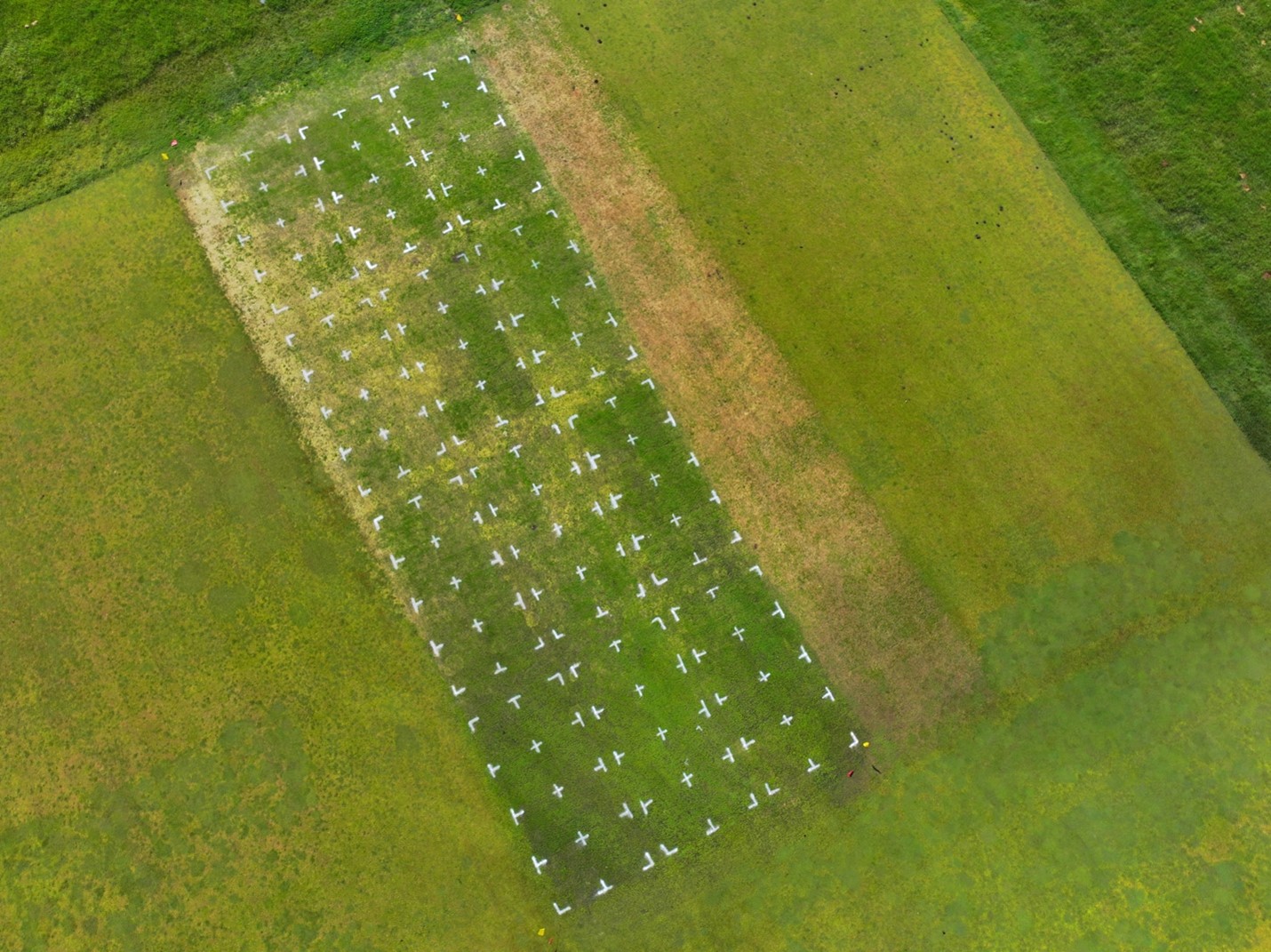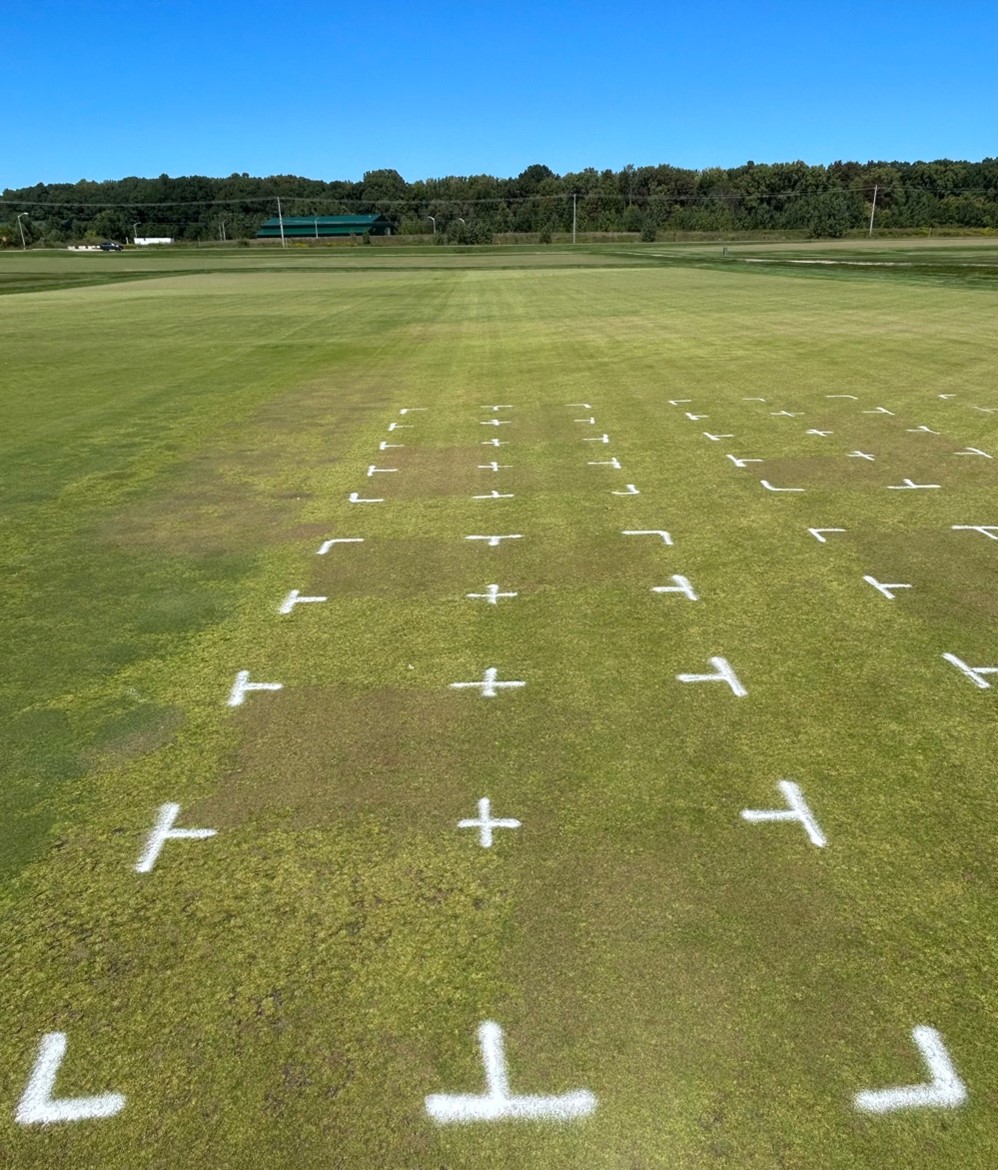By Payton Perkinson, Kevin W. Frank, and Eric Galbraith, Michigan State University
Re-establishing turfgrass from seed following winterkill is challenging due to suboptimal growing conditions prevalent in the spring in northern climates. Since the beginning of the WinterTurf grant, research has been conducted to investigate how to efficiently re-establish putting greens following winterkill.

This spring, the second year of research was conducted at Michigan State University, evaluating spring establishment through interseeding an annual bluegrass (Poa annua) putting green that had simulated winterkill (Figure 1). This study's objective is to evaluate the timing of spring seeding and seed type on establishment rates. To simulate winterkill, we applied nonselective herbicide to the putting green in October and again in March. Once soil temperatures reached 45°F at a 2-inch depth in the spring, we began the seeding process. To prepare the site for seeding, the green was verticut in two directions. We seeded five creeping bentgrass (Agrostis stolonifera) cultivars, one annual bluegrass cultivar, a 50:50 by weight mixture of creeping bentgrass and annual bluegrass, and left a plot unseeded. After seeding, sand topdressing was applied to provide adequate soil to seed contact. The seeding process occurred every 7 days for 3 weeks to initiate the early, middle, and late spring seeding date treatments.
The 2023 results showed that there were significant differences in timing of seeding and seed type on spring establishment. The early spring seeding date had a higher percent cover than the middle and late spring seeding dates during two weeks in the beginning of the study, but there were no differences between treatments by the study's end. There were also differences between cultivars with ‘Penn A-4’ and ‘Penncross’ creeping bentgrasses having some of the highest percent cover among treatments. The 2023 results suggest that seeding earlier in the spring could potentially allow for faster establishment compared to waiting until later in the spring to seed, and cultivar selection should be considered.

Data is currently being collected for the second year of the study by using digital image analysis to quantify percent turfgrass cover for each plot. Once plots have reached 100% turfgrass cover, fluazifop-P-butyl will be applied to kill the creeping bentgrass and allow for quantification of annual bluegrass cover (Figure 2).